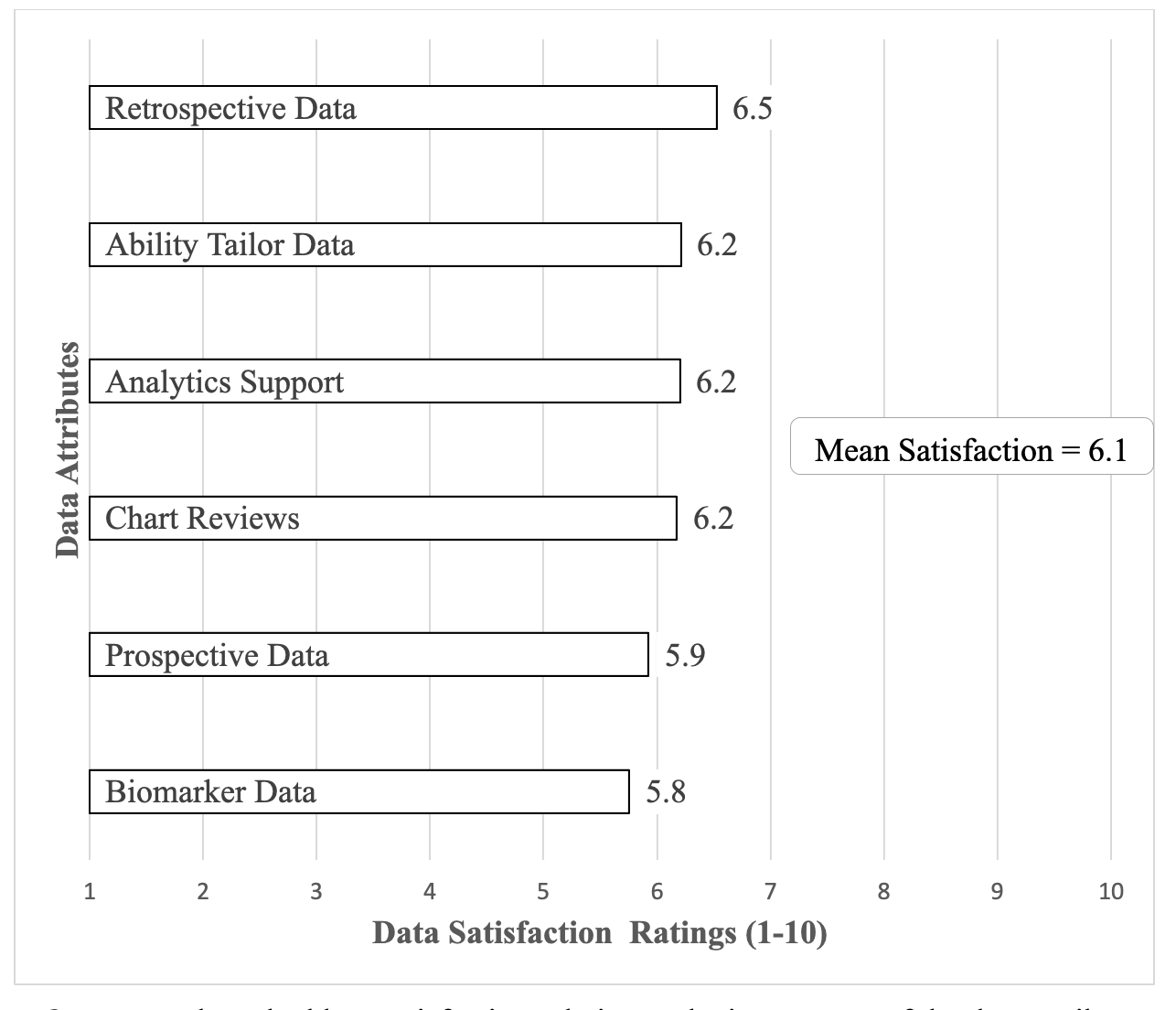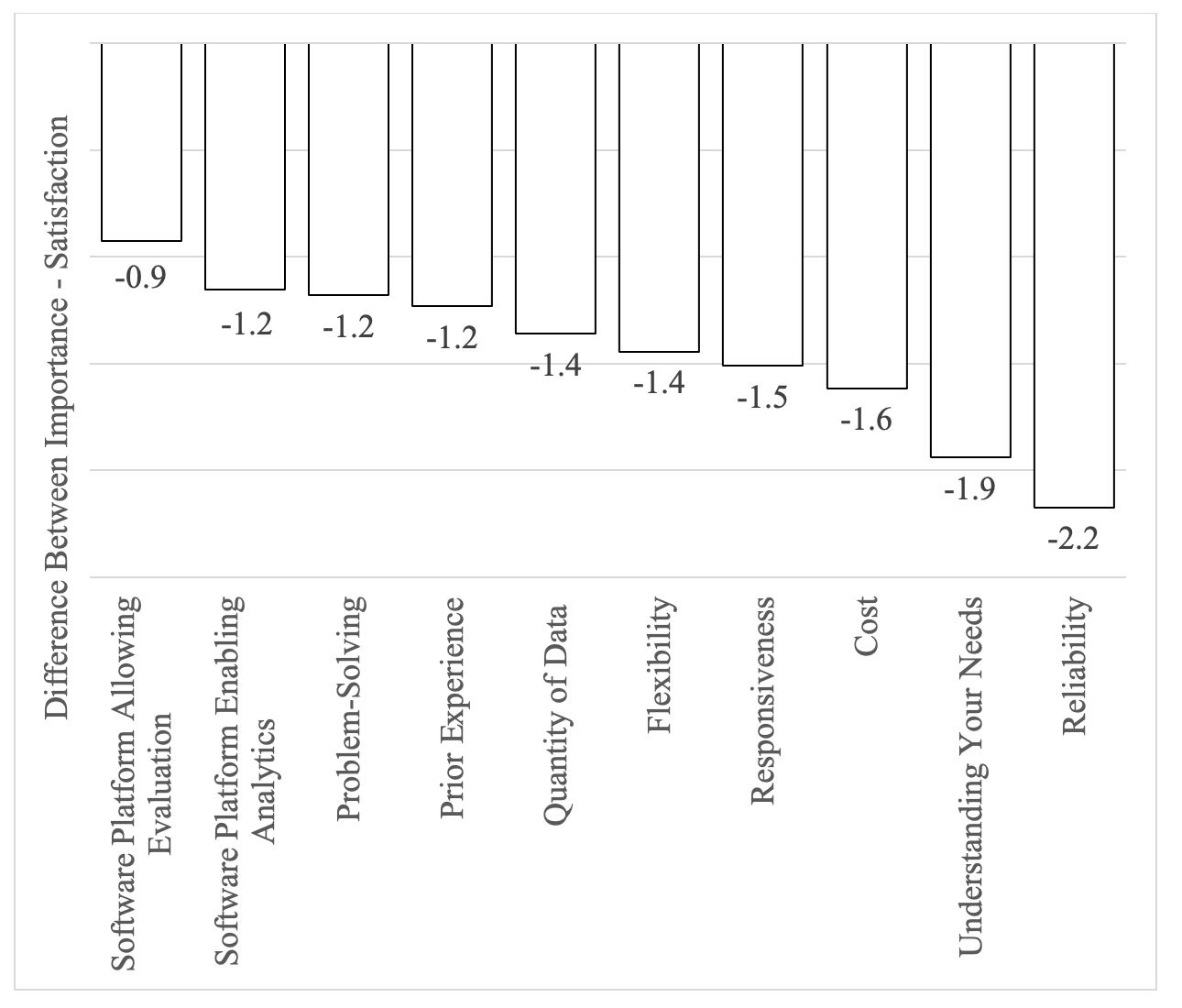The Real-World Data That Matters
Survey taken by pharma and CRO executives evaluates attributes of large datasets.
While real-world data has shown the potential to transform the clinical trials industry, uptake and usage of real-world data has not met expectations. What drives the uptake and usage of real-world data? In this blog, we look at the attributes or characteristics of the raw data. More-and more companies are acquiring expensive and large datasets that allow for sophisticated analysis. What are the attributes of these datasets that drive real-world data adoption?
To assess this question, we surveyed 133 pharma & CRO executives. We asked them to rate the importance of various data attributes if they were selecting a real-world dataset. The attributes we considered were the ability to tailor the data structure and data dictionary and the availability of analytics support from the data provider, chart reviews, retrospective longitudinal data, prospective longitudinal data, and biomarker data.
Figure 1. Importance of Data Attributes with Real-World Data

While the ability to handle longitudinal data stands out, all of the data attributes are all ranked fairly high and are all close to each other, suggesting the importance of the data and the difficulties that executives have in one attribute above all the others. Our respondents have expectations for the data. What about their satisfaction with these data attributes?
Figure 2. Satisfaction with Real-World Data Attributes

Our respondents had low satisfaction relative to the importance of the data attributes. None of the satisfaction ratings across the functions came up to the importance. The average satisfaction level was a mean of 1.2 points below the rated importance. While biomarker data had the lowest satisfaction, we emphasize that is not far below the highest rated data attribute. None of the attributes excelled in their satisfaction scores.
We also examined the gaps between the importance and satisfaction scores to prioritize improvement efforts.
Figure 3. The Gaps Between Importance and Satisfaction

The best opportunity to improve the performance (i.e. The Return on Data) of data is enhancing the reliability of data, followed by cost and responsiveness. Organizations need data that will work every time and be able to respond to organizational needs at a reasonable cost.
Some of these issues relate not just to the data, but also the intermediaries (analytic software, vendors, and consultants) that convert raw data to information. We consider this in the next blog.
For more information on RWD, view this Pharm Exec Roundtable from March 2022.
Michael Howley, PA-C, MBA, PhD & Peter Malamis, MBA
Addressing Disparities in Psoriasis Trials: Takeda's Strategies for Inclusivity in Clinical Research
April 14th 2025LaShell Robinson, Head of Global Feasibility and Trial Equity at Takeda, speaks about the company's strategies to engage patients in underrepresented populations in its phase III psoriasis trials.
Key Findings of the NIAGARA and HIMALAYA Trials
November 8th 2024In this episode of the Pharmaceutical Executive podcast, Shubh Goel, head of immuno-oncology, gastrointestinal tumors, US oncology business unit, AstraZeneca, discusses the findings of the NIAGARA trial in bladder cancer and the significance of the five-year overall survival data from the HIMALAYA trial, particularly the long-term efficacy of the STRIDE regimen for unresectable liver cancer.
Pfizer Discontinues Development of Danuglipron for Chronic Weight Management
April 15th 2025Despite meeting key pharmacokinetic goals, a potential case of drug-induced liver injury led Pfizer to conclude that danuglipron’s risk-benefit profile did not support further development for chronic weight management.
Odylia Rare Disease Day Event Highlights Challenges in R&D for Orphan Drugs
April 14th 2025Odylia Therapeutics event brings together leaders across biotech, pharma, venture capital, patient advocacy, and research sectors to address the financial and structural barriers that impede rare disease drug development.